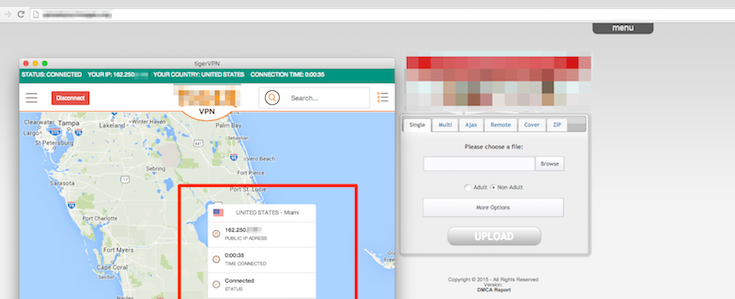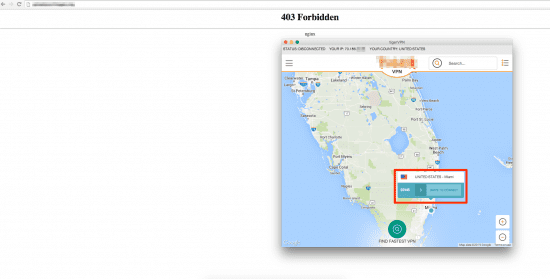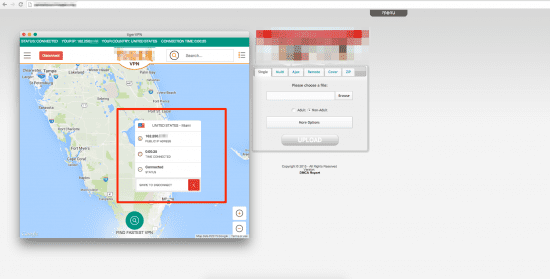How Unethical Hosts Fake DMCA Compliance
 I do a great deal of work with victims of revenge and nonconsensual pornography in helping them get images and videos removed from the Web. While much of these efforts are through the Cyber Civil Rights Initiative and their End Revenge Porn campaign, a lot of it simply involves people contacting me directly asking for help.
I do a great deal of work with victims of revenge and nonconsensual pornography in helping them get images and videos removed from the Web. While much of these efforts are through the Cyber Civil Rights Initiative and their End Revenge Porn campaign, a lot of it simply involves people contacting me directly asking for help.
While I am always happy to help, it unfortunately means working with some of the worst sites on the Internet. That includes many dedicated solely to the purpose of sharing revenge pornography and many adult websites that simply don’t care if the material they host is consensual, copyright infringing or even featuring models below the age of consent.
These sites often pay lip service to complying with the Digital Millennium Copyright Act (DMCA) or similar copyright laws and promise to remove images and videos that are infringing. However, many of these actually have no intention of complying. DMCA forms don’t work (often due to CAPTCHA errors), email addresses bounce, site contact information is private or invalid and, even if an email does get through, it is often simply ignored, no matter how heinous the content being reported is.
Some sites, however, take it a step farther. Rather than just ignore a copyright notice and risk getting additional emails or faxes, they take the additional step of making it appear to have removed the content when, in truth, it’s still alive in well.
While this behavior is pretty rare because it is so easily defeated, it’s a problem for many DMCA filers, especially those who are new to the process and its one that all copyright holders should be aware of.
How it Works
There are several methods that sites can use to achieve this but most have the same end game. Once you file your copyright or other notice of abuse, the host, rather than remove the material at question, simply blocks you, the submitter, from accessing the site.
This is most commonly done by blocking your IP address. While this method isn’t perfect, especially since your IP address may rotate without any action on your part, for most home or corporate users, it’s a pretty effective way to prevent you from accessing the site or infringing materials.
This means, when you come back to check and see if the site’s content is down, it appears that the content, and maybe the entire site, is offline. However, in reality, the rest of the world can view the content, it’s just you that can’t see it.
The hope is that this will cause you to see the content is offline, mark it off your list and move on to the next without them having to take any action action. While it’s an imperfect tactic, it certainly gives one-off submitters the impression content has been removed and can fool many automated monitoring tools searching for compliance.
As such, it’s important to know what it looks like so you can defeat it should anyone try it with you.
Example Block In Action
I recently ran across this exact problem when dealing with an image host located in Eastern Europe. However, I took the time to screenshot the site to illustrate how it works in this case.
After submitting a DMCA notice via email (the form was broken) I revisited the site to follow up and was greeted with this error:
As you can see in the image above, I was not connected to a VPN provider and was using my home IP address. However, once I connected to my VPN and received a new IP address, the site suddenly began to function again.
This was because the site was only blocking my home IP address. Any other IP address I accessed the site from worked fine. The host, rather than removing a case of nonconsensual pornogrpahy, opted instead to block access to the person reporting it.
It’s a devious tactic that I’ve become all too familiar with.
How to Spot It and How to Beat It
Spotting this kind of false takedown is not always straightforward. Depending on how the block is executed, it may look exactly like the work has been removed.
However, there are a few warning signs you should be alert for:
- Whole Host is Down: This is most often done by image or video hosts. When content is legitimately removed, the rest of the site remains active though, when doing an IP block, the entire site will likely appear to be offline. Be suspicious if you can’t visit the site’s home page in addition to the content you reported.
- Forbidden Error: As you see above, when I visited the site was given a 403 error saying I was forbidden to view the content. Not that the site or page was down, but that I was blocked from accessing it. When content comes down legitimate it usually either has a custom copyright error or displays a 404 error, indicating that the page or material is not found.
- No Response: If the content is removed but there was no response confirming its deletion, you should be suspicious and make sure that it was really removed. Though some hosts do remove content but don’t reply, typically there is at least an automated confirmation.
As far as beating it goes, I first noticed this issue back in 2007 and wrote a short guide for getting around an IP block. Those methods will still work and may be great for one-off cases, but in 2015 the easiest way to do it is to simply use a VPN connection. I keep subscriptions with multiple VPN providers that give access to over a hundred potential IP addresses that I can use to get around such tactics.
Though there are many free VPN providers, if you’re concerned about your privacy and your security, I highly recommend finding a low cost paid provider. Typically you can get a short term subscription for just a few dollars or even just get a free trial.
Still, the best way to defeat it is to not be victimized by it in the first place. In the case above, I made a mistake and used my home IP address to send the notices (I didn’t realize I was disconnected). Normally, I use my VPNs to send out DMCA notices and rotate which I use for access for this very reason. Typically, even if a site does block my IP, I never notice it because, when I return, I’m on a different one.
Admittedly though, I am a special case where such steps are necessary. But if you remember to use a VPN or otherwise change your IP when you send the notices, you can’t be blocked when you come back to check for compliance so long as you are on a different address when you come back.
Next Steps
If you find that a host has ignored your DMCA notice and tried to block you, they aren’t likely to comply after a second notice. Though I do usually send a follow up notice to show that the tactic doesn’t work, I also don’t expect compliance.
Instead, given that most of these sites are image and video hosts, your best bet is to locate and reach out to their hosting provider, going farther up the ladder. Also, it may be time to consider reaching out to the search engines and removing the content from their indexes as well.
All in all, only the most unscrupulous hosts will engage in this kind of behavior and, if you find that it’s happened to you, the best thing you can do is simply move on from them and go on to the next step.
Arguing with someone who is trying to block you may be entertaining, but it’s not productive.
Bottom Line
To be clear, I don’t see this approach very often and it’s only something I’ve seen on sites that I would say are very, very scummy. Other hosts may ignore DMCA notices or put up needless barriers to compliance, but only the worst of the worst will attempt to block those who file them.
Yet, it does happen and if you find yourself regularly dealing with sites that might be candidates for this kind of behavior, you need to be aware of how to spot it and how to defeat it.
Fortunately, it’s not a very difficult tactic to defeat but, if you aren’t looking for it, you might be not even notice when it happens. In that case, it’s all-too-easy to mark the matter as resolved and move on, even though the infringement is still very much alive and well on the web.
Want to Reuse or Republish this Content?
If you want to feature this article in your site, classroom or elsewhere, just let us know! We usually grant permission within 24 hours.


